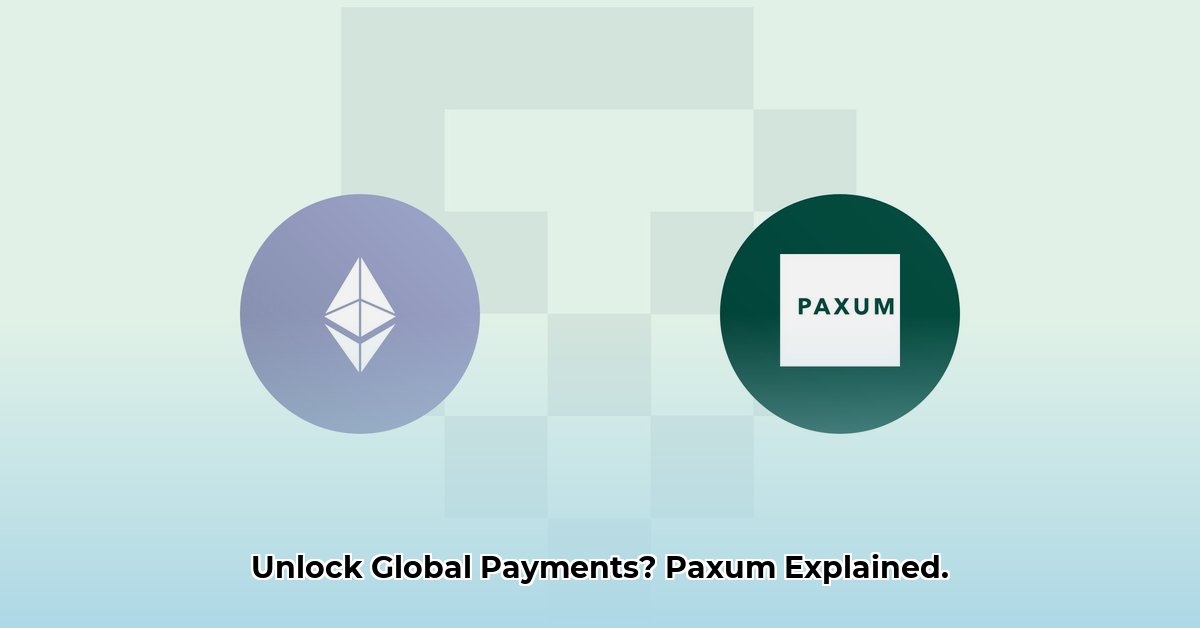
Sending money internationally shouldn't be complicated. This review examines Paxum, a global payment platform aiming to simplify international transactions. We'll analyze its features, user experience, pricing, security, and compare it to alternatives like PayPal and Wise. This detailed review will equip you with the information needed to decide if Paxum suits your financial needs, whether you're an individual or a business.
What is Paxum?
Paxum is a payment platform enabling international money transfers for individuals and businesses. It offers features designed to streamline global payments, but understanding its strengths and weaknesses is crucial before using the service.
Key Features and Functionality
Paxum's core features include mass payouts (ideal for businesses paying multiple recipients), peer-to-peer (P2P) transfers, and multi-currency support. Mass payouts significantly simplify payroll or affiliate payments. Multi-currency support reduces the complexities of international transactions. P2P transfers offer convenient person-to-person funds transfers, though limitations on personal account transfer amounts exist.
User Experience: Navigating the Platform
Many users report a positive experience with Paxum's interface, describing it as intuitive and easy to navigate. Account setup is generally quick, often within a day. The mobile app enhances convenience. However, some users with high-volume P2P needs have noted the platform's limitations on personal account transfers. This restriction may prove inconvenient for those regularly transferring significant sums.
Pricing and Fees: A Lack of Transparency
Paxum's pricing model lacks transparency. The website doesn't clearly display its fee structure, making direct comparisons with competitors like PayPal or Wise challenging. This lack of upfront information is a significant concern, particularly for businesses meticulously tracking expenses. Unexpected fees could arise without prior notice.
Security and Compliance: Protecting Your Funds
Concerns exist regarding Paxum's security protocols and PCI DSS compliance. While Paxum emphasizes security, detailed information on its security measures is limited. For a financial platform, complete transparency regarding security is paramount. Similarly, clear information on regulatory compliance across various jurisdictions is lacking. This lack of detail raises legitimate questions about how Paxum manages compliance with international financial regulations.
Paxum: Weighing the Pros and Cons
Here's a balanced assessment of Paxum's advantages and disadvantages:
Pros:
- Speed and Reliability: Transactions are generally processed quickly and reliably.
- User-Friendly Interface: The platform is praised for its ease of use and intuitive design.
- Multi-Currency Support: Seamlessly handles multiple currencies for international transactions.
- Mass Payout Functionality: Streamlines payments to numerous recipients.
- Relatively Quick Account Setup: Faster than traditional banking options.
Cons:
- Pricing Transparency: Lack of clear pricing information creates uncertainty.
- Limited P2P Transfer Limits (Personal Accounts): Restrictive for high-volume users.
- Security Information: Insufficient detail on security protocols raises concerns.
- Regulatory Compliance: Lack of specific global compliance information is a concern.
- Absence of a Formal Dispute Resolution System: Could complicate issue resolution.
Paxum vs. PayPal: A Feature Comparison
Paxum and PayPal both serve the international payments market but with different focuses. PayPal benefits from widespread merchant acceptance and brand recognition. Paxum might offer advantages for businesses needing mass payouts or operating in specific niches where its features better suit their needs. The optimal choice depends entirely on individual needs.
Actionable Advice: Recommendations for Users and Paxum
The following recommendations aim to enhance transparency, improve security, and optimize the Paxum experience:
- Individual Users: Assess your P2P transfer volume; consider alternatives if high-volume transfers are needed.
- Business Clients: Inquire about fees upfront; leverage mass payout strategically; thoroughly assess security protocols.
- Paxum Management: Prioritize transparency by providing detailed pricing and security information.
- Regulators: Conduct regular audits to ensure compliance with all regulations and promote industry transparency.
Risk Assessment: Identifying Potential Pitfalls
This matrix highlights potential risks and mitigation strategies:
| Risk Factor | Likelihood | Impact | Mitigation Strategy |
|---|---|---|---|
| Security Breach | Medium | High | Robust security protocols, regular audits, penetration testing. |
| Regulatory Non-Compliance | Medium | High | Proactive monitoring and strict adherence to regulations. |
| Reputational Damage | Low | High | Excellent customer service and transparent communication. |
| Competition | High | Medium | Continuous service improvement and innovative feature development. |
| Dependence on Third Parties | Medium | Medium | Diversify partnerships; implement backup and redundancy plans. |
Choosing an international payment platform is crucial. Paxum offers several beneficial features but the lack of transparency around pricing and security necessitates careful consideration. Weighing your needs and potential risks is vital before using Paxum or any payment processor.